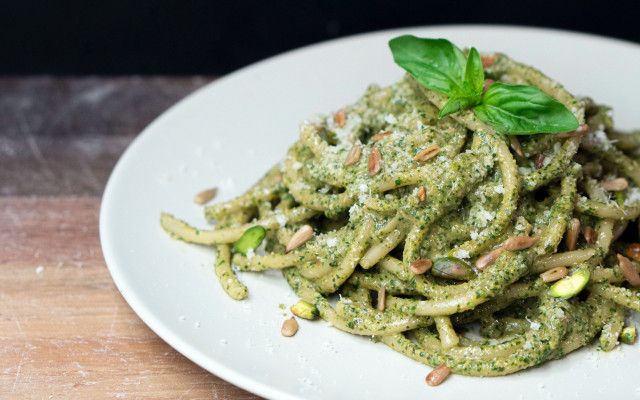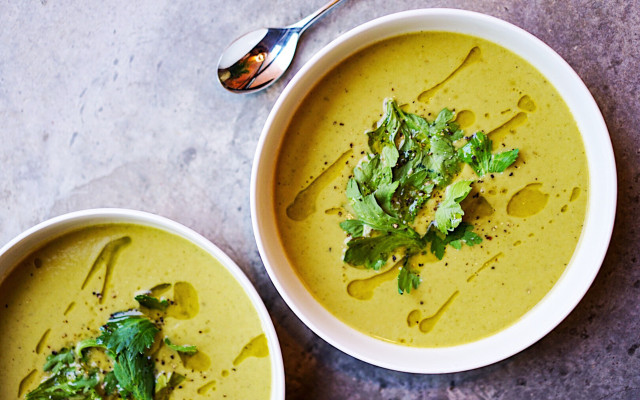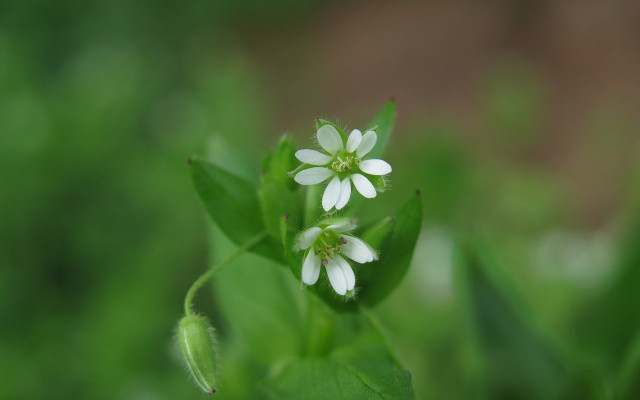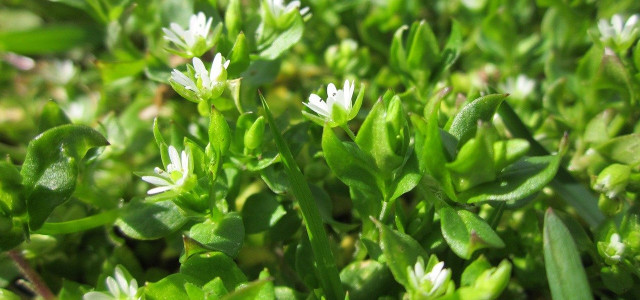Edible chickweed can be found in fields and gardens throughout North America and much of the rest of the world. Although it looks unremarkable, this wild herb can be used in many ways – and it’s full of important nutrients.
Common edible chickweed gets its name from the fact that its nutritious green leaves are popular with both wild birds and domestic chickens. Humans, on the other hand, have often thought it a troublesome weed, because it can spread like a carpet on farmland and quickly choke other vegetation. However, chickweed’s reputation as a mere weed is unfair, because it can be very useful, both medicinally and as an ingredient for cooking. In the kitchen, it enhances many dishes, while also providing plenty of vitamins and minerals. (Discover some more of Utopia’s nutrition secrets here!)
Using Chickweed in the Kitchen: Salads, Spreads and Dips

Chickweed is a hardy, leafy herb, and usually grows all year round. In parts of the US with very hot or dry summers, you’re most likely to find it during the fall and early spring. You can recognize it easily: it grows vigorously as a low ground cover, with tiny white flowers and larger oval leaves with pointed tips. Remember to always be careful when picking and eating wild plants! Find out more with our guide to edible weeds.
You can harvest chickweed’s edible leaves at any time to use them at home. But as with most leafy greens, chickweed is tastiest before it has had a chance to flower. Chickweed’s fresh, slightly sweet flavor makes it suitable for many different culinary applications:
- Salads: Fresh chickweed leaves make a delicious addition to wild herb salads. Especially suitable for this are the small, young leaves, which are particularly tender and juicy. Their taste is reminiscent of sweetcorn or peas.
- Herb butter: You can also chop the chickweed leaves and use them for herb butter. If you like, you can also add other herbs: Find out how to grow your own herbs here!
- Pesto: For a delicious chickweed pesto, combine the chopped leaves with oil, salt, and pepper, a little lemon juice, and some pine nuts or hazelnuts. You can read exactly how to do this in our step-by-step recipe for homemade pesto.
- Soup: Chickweed makes a great fresh garnish for hearty dishes like potato soup.
- Greens: Edible chickweed leaves are tasty enough to put front and center. You can cook with them like spinach, with a bit of garlic and olive oil for an extra flavor boost.
Chickweed Soup: A Simple Recipe



For a simple soup made from chickweed leaves, you’ll need the following ingredients:
- 1 cup (or a good handful) of chickweed
- 1/2 an onion
- 3 potatoes
- butter (or a good vegan substitute like this organic coconut oil**)
- 10 oz vegetable broth
- salt and pepper
- nutmeg or mustard seed (optional)
This recipe yields about two servings. Here’s what to do:
- Wash the chickweed leaves and chop them.
- Peel the onion and dice it finely. Peel the potatoes and cut them into slightly larger cubes. Don’t forget to reuse your vegetable scraps and leftover onion skins!
- Melt the butter (or vegan substitute) in the pot. Sauté the diced onion for about five minutes, until translucent. Then brown the potato cubes.
- Deglaze the onion and potatoes with the vegetable broth. Let everything simmer on low heat for about 15 to 20 minutes.
- Now add the chickweed. As soon as the leaves have wilted a little, remove the pot from the heat.
- Puree the soup with a hand blender and season to taste.
Nutrition Facts: What makes this plant so healthy?
Chickweed leaves don’t just taste good – they are also rich in essential vitamins and minerals. These include:
- Vitamin A – important for skin and eyes
- Iron – our bodies needs iron to produce blood cells
- Copper – important for cellular respiration
- Vitamin B1 – essential in the nervous system and metabolism
- Vitamin B2 – encourages cell growth and development
- Niacin – responsible for the metabolization of fat, carbohydrates, and protein
- Vitamin C – strengthens the immune system
- Phosphorus – the most important component of bones, more even than calcium
- Magnesium – supports muscle function and metabolism
- Potassium – ensures that muscle signals are transmitted properly
- Silicic acid (silicon) – good for joints, connective tissue and hair



Chickweed also contains saponins. So far, there has been little research on how these foam-forming organic substances affect the human body. Some studies have suggested that they can help fight obesity. Many cultures also use chickweed as a natural remedy for mild skin ailments such as diaper rash.
Remember: If you’re heating your edible chickweed leaves, you should be careful not to overcook them, because this can render some of the most valuable nutrients inactive. As with many fresh herbs and leafy greens, it’s best to add chickweed to your soups or other warm dishes shortly before serving. Of course, when cooking with anything you’ve harvested yourself, always make sure you’ve washed the leaves thoroughly.
** Links to retailers marked with ** or underlined orange are partially partner links: If you buy here, you actively support Utopia.org, because we will receive a small part of the sales proceeds. More info.Do you like this post?






